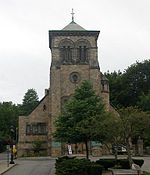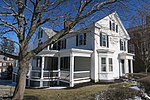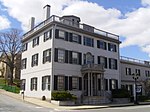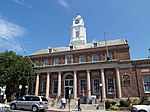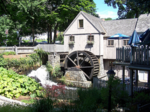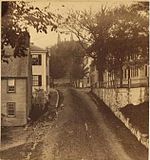Burial Hill
Buildings and structures in Plymouth, MassachusettsBurial places of Mayflower passengersCemeteries established in the 17th centuryCemeteries in Plymouth County, MassachusettsCemeteries on the National Register of Historic Places in Massachusetts ... and 3 more
National Register of Historic Places in Plymouth County, MassachusettsPlymouth ColonyUse mdy dates from November 2022
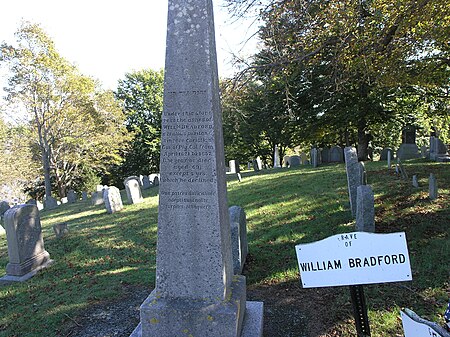
Burial Hill is a historic cemetery or burying ground on School Street in Plymouth, Massachusetts. Established in the 17th century, it is the burial site of several Pilgrims, the founding settlers of Plymouth Colony. It was listed on the National Register of Historic Places in 2013.
Excerpt from the Wikipedia article Burial Hill (License: CC BY-SA 3.0, Authors, Images).Burial Hill
South Russell Street, Plymouth
Geographical coordinates (GPS) Address External links Nearby Places Show on map
Geographical coordinates (GPS)
| Latitude | Longitude |
|---|---|
| N 41.956111111111 ° | E -70.666111111111 ° |
Address
Burial Hill
South Russell Street
02360 Plymouth
Massachusetts, United States
Open on Google Maps

